Three-hundred panoramic steps connect the medieval village of Fontana Liri Superiore, perched on a hill of olive groves overlooking the Liri River, to Fontana Liri Inferiore, built in the plain below around the gun-powder factory “Regio Polverificio dell’Esercito” at the end of the nineteenth century. Only in 1863 did the “Town of Cinema and Sculpture” take the name of Fontana Liri.
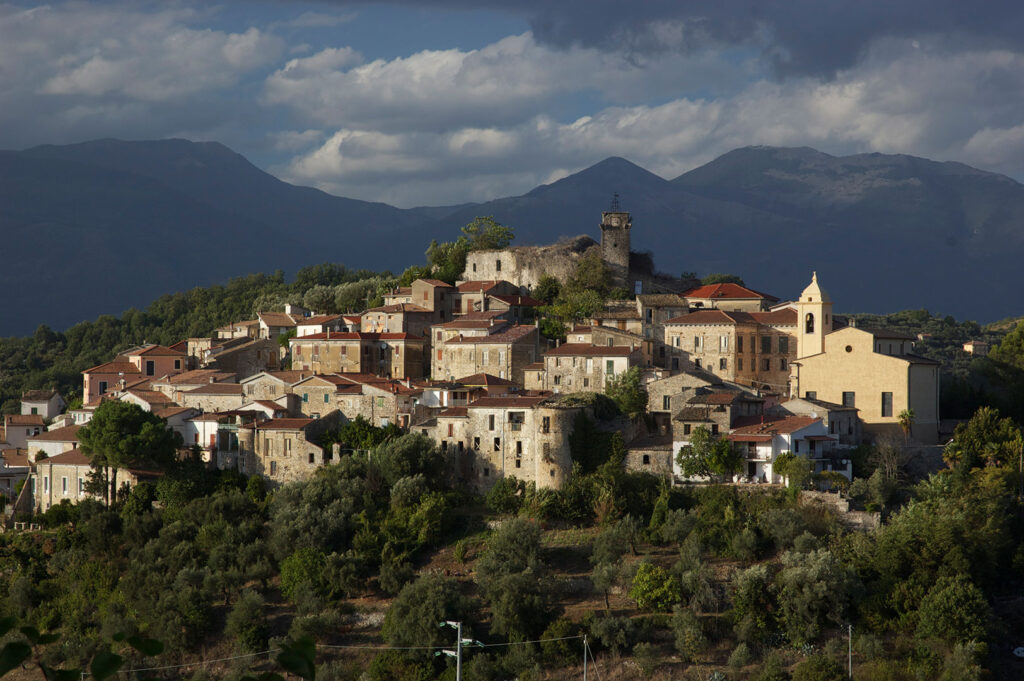
Fontana Liri – www.comunefontanaliri.fr.it
“Argine muschio arenile incisione nel tempo infanzia splendente di colori in nera terra ciociara, impronte stagnano sul Liri. Riemerge dall’esplosione un sogno che in pietra la terra ricompone”
With these words from the poem “Il Liri”, Umberto Mastroianni, a poet and one of the greatest sculptors of the 1900s, describes Fontana Liri, his hometown. His works, inspired by the Resistenza, which he had joined, are exhibited in Rome, London, and New York.
His nephew was Marcello Mastroianni, the unforgettable sacred monster of cinema and theatre, and an undisputed Latin lover. In December, the competition for the “Fontana Liri per Marcello Mastroianni” award is held in town in his memory.
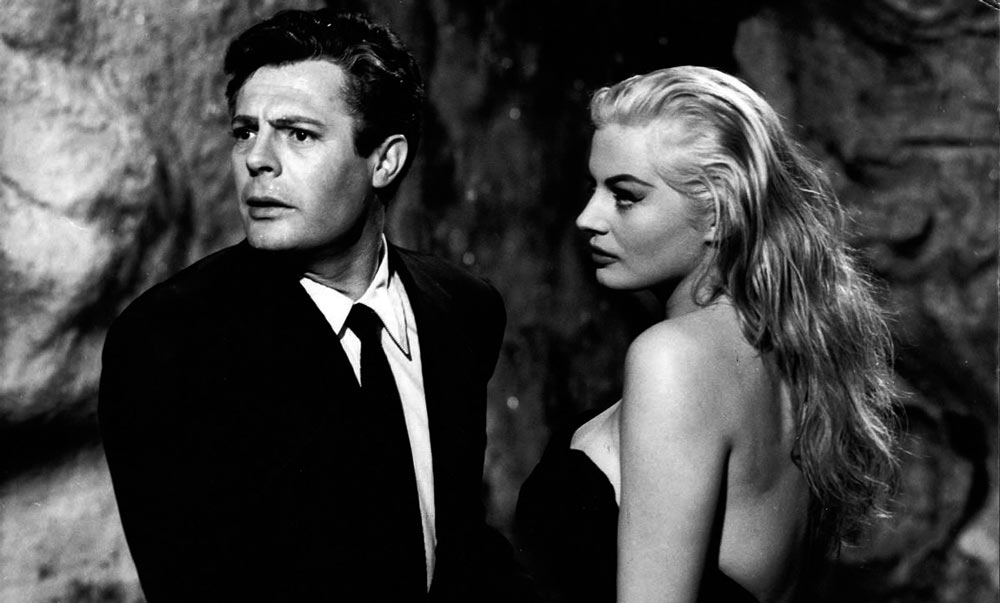
Marcello Mastroianni and Anita Eckberg in “La Dolce Vita”
“A wonderful adventure, the most exhilarating experience in my career and life, in an absolute sense.”
This is how Mastroianni defined his experience with Federico Fellini in 1960 when he played the leading role in “La Dolce Vita”. Thanks to this worldwide successful movie, he obtained the award “Nastro d’Argento”. Upon his death in 1996, the Trevi Fountain, symbol of the film, remained closed for mourning for a day.
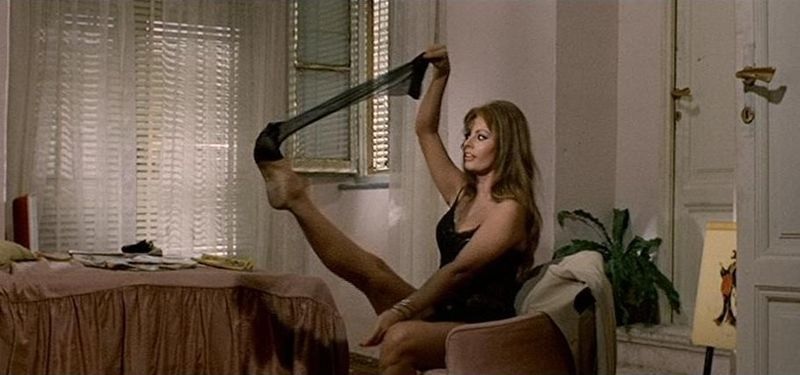
Sophia Loren in “Ieri, Oggi, Domani”
Among the numerous shots with Sophia Loren, the striptease scene in “Ieri, Oggi, Domani” from 1963 remains unforgettable. In 1965, the movie won the Academy Award for the Best Foreign Film. In 1988 he starred in “Splendor” by Ettore Scola, as a cinema owner in Arpino, his family’s hometown. He took this opportunity take a trip to Fontana Liri, often praised in his interviews for its folklore, gastronomy, and wine.
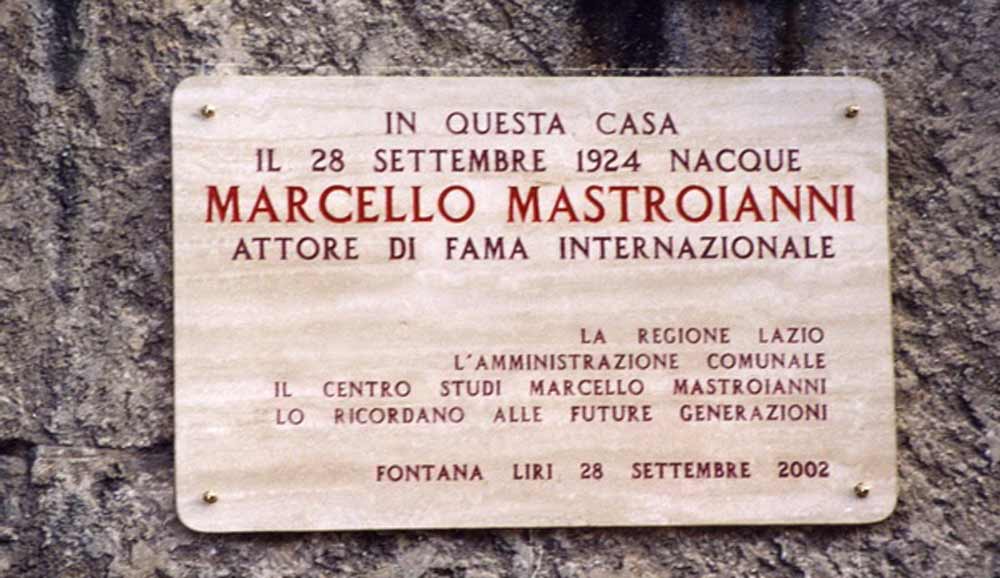
Commemorative plaque on Marcello Mastroianni’s house in Fontana Liri
The renowned actor is also portrayed on a mural in the main square of Fontana Liri and a commemorative plaque has been placed on his native house.
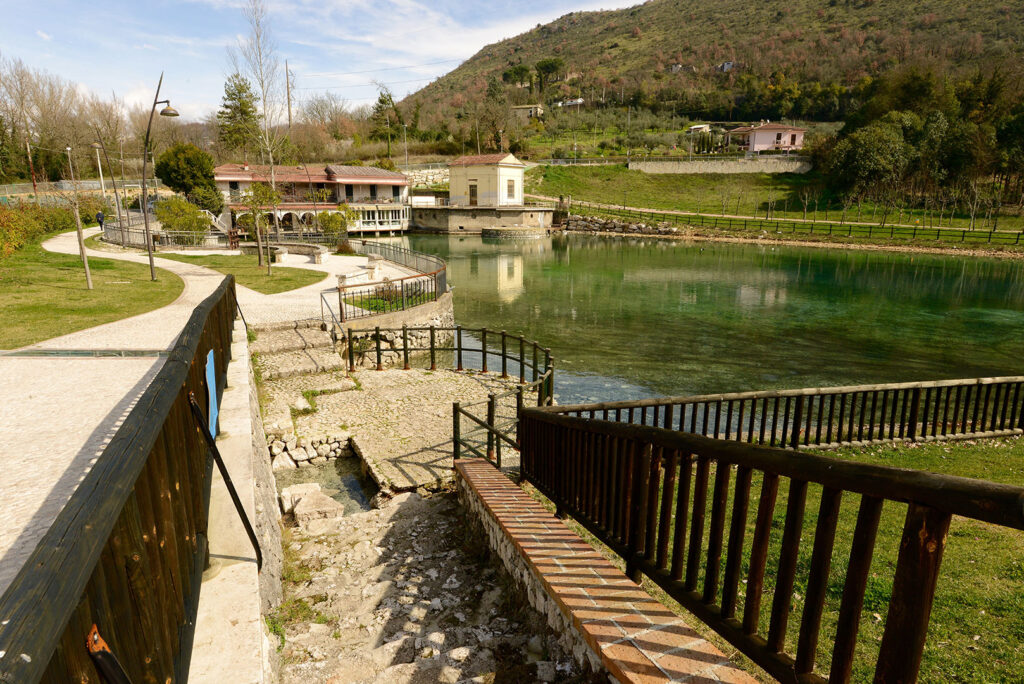
Lago Solfatara – www.comunefontanaliri.fr.it
Also noteworthy is the poet and writer Cesare Pascarella, born in Rome but of parental origin from Fontana Liri. Arrived in town, he noticed the sharp smell of sulphur, coming from the lake called “Zulufràga”, into which five or six streams of mineral water flowed.
“chiamato Zulufràga, ove vanno a gettarsi cinque o sei rigagnoli di acqua minerale della quale si fa modesto commercio.”
It was the Laghetto della Solfatara, the sulphur spring said to extend over the site where the gorgeous Villa of Scipio Africanus stood. The 4000 square metres lake, where ferruginous and sulfurous waters mix each other, stretches at the foot of the Le Cese Hill, down to the Fossa del Monte karstic chasm. The lake spring was once considerable, but the water level is nowadays dramatically dropping. This picturesque place in the heart of the village is perfect to enjoy moments of relax.

Castello Succorte – www.comunefontanaliri.fr.it
The Fortress, built around the year 1000, became Castello Succorte only later. It stands on the steep Mountain of Santa Lucia, surrounded by the village and the walls.
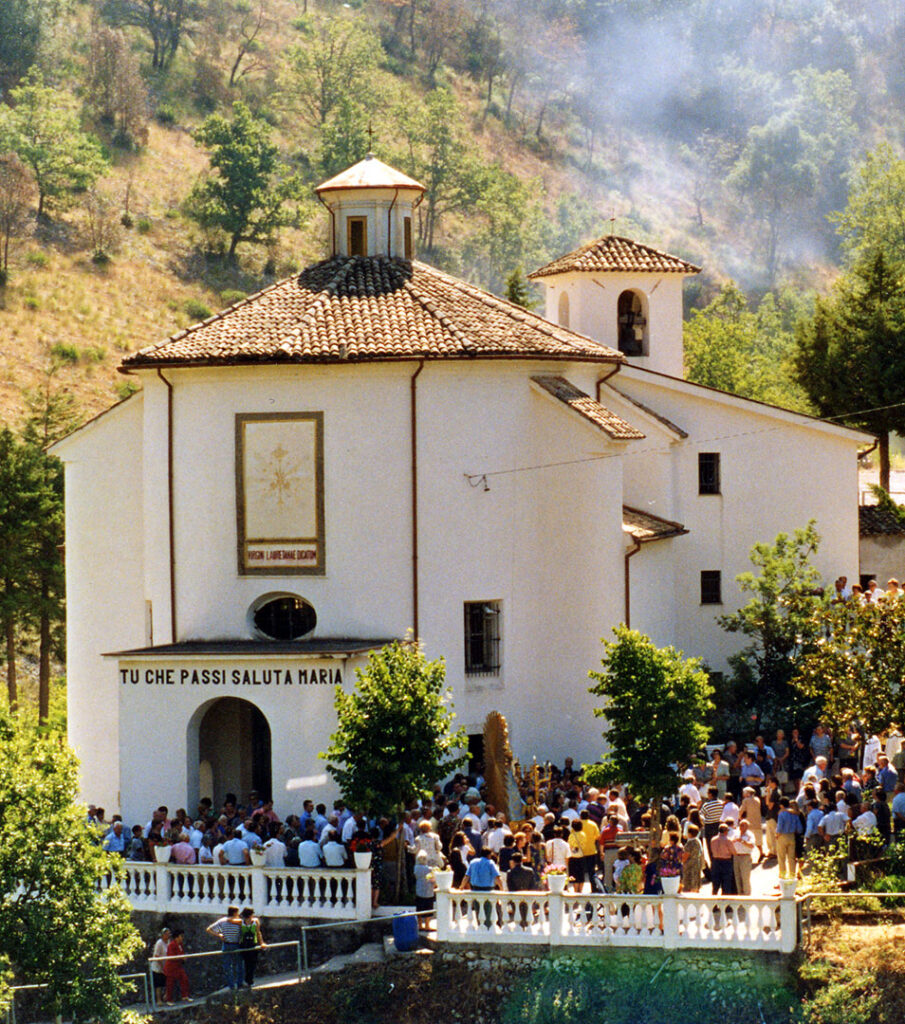
Festa Maria Santissima di Loreto – www.comunefontanaliri.fr.it
Among its typical products worth tasting are the ciambella De.Co., sagne e fagioli and the crespella. The Patron Saint Santa Barbara is celebrated on the first Sunday of June, the Madonna di Loreto on the last Sunday of July, and San Paolo on the last Sunday of August. The Church of San Paolo hosts a statue of the Saint from 1900, created by Vincenzo Morricone from Arpino.
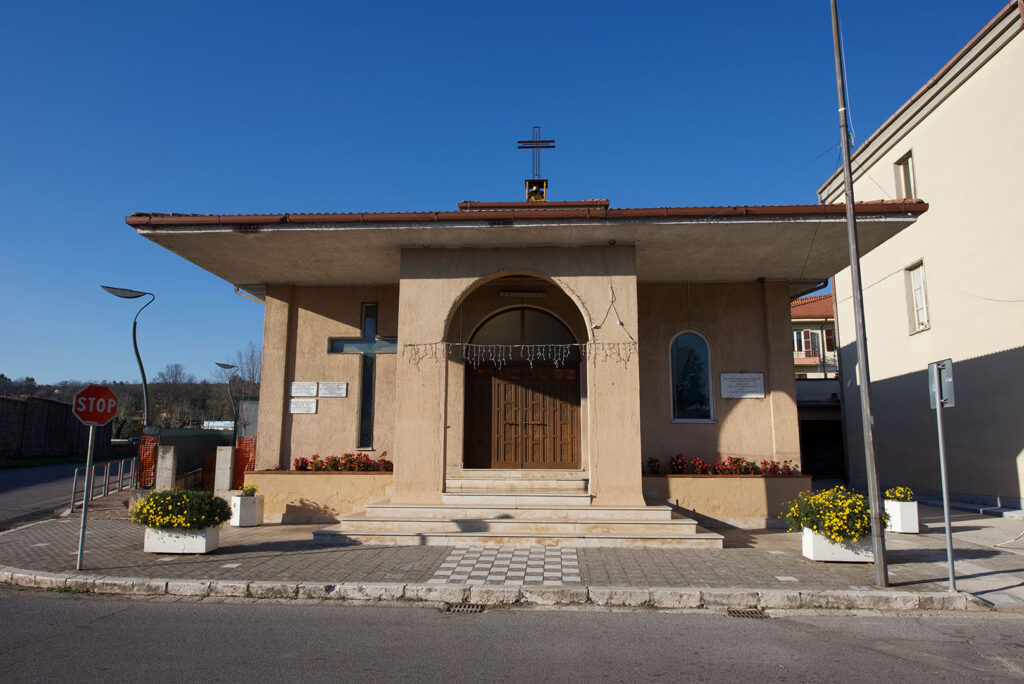
Church of Santa Barbara – www.comunefontanaliri.fr.it
According to tradition, Santa Barbara, the protector of firefighters, bomb disposal experts and sailors, died a martyr in 306 AD. Her cult dates back to the end of the nineteenth century, when the gun-powder factory was inaugurated in Fontana Liri with lights and decorations. The Church of Santa Barbara was built in 1925 and, in 1933, it was expanded until the square. In addition to the Feast of Santa Barbara, other religious events take place in Fontana Liri on December 4.
